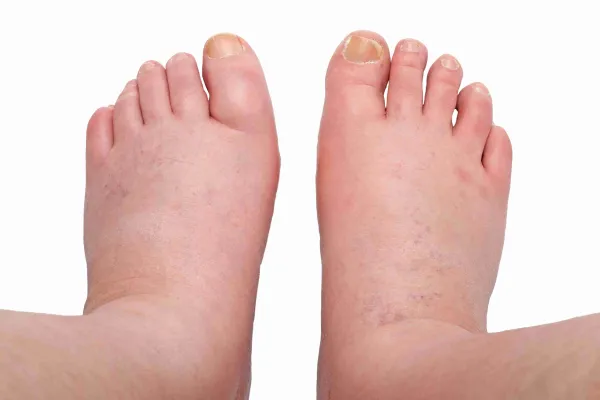Jump Start Your Understanding of These 2023 E/M Updates
CPT® shakes up inpatient/observation care services coding. A revised set of observation care codes are headed your way in 2023, so what better time to learn a new way to calculate the appropriate service levels for hospital admissions, observation and same-day discharges? Starting January 1, 2023, you’ll have to apply the same medical decision making (MDM) elements and time parameters CPT® introduced in 2021 for the office/outpatient evaluation and management (E/M) services for inpatient/ observation care services. Here is a comprehensive breakdown of what you’ll need to know as you prepare for the new year. Erase These Observation Care Codes Effective Jan. 1, 2023, you will no longer be able to report 99218-99220 (Initial observation care, per day, for the evaluation and management of a patient …), which you currently use to report initial outpatient hospital observation services; 99224-99226 (Subsequent observation care, per day, for the evaluation and management of a patient …), which you currently use to report subsequent outpatient hospital observation services; or 99217 (Observation care discharge day management …), which you currently use to report “all services provided to a patient on discharge from outpatient hospital ‘observation status’ if the discharge is on other than the initial date of ‘observation status’” per the descriptor to the soon-to-be-deleted code. Report Observation, Admissions, and Same-Day Discharges in 2023 Like This Instead, you will use one of the following existing initial hospital care codes, which have received extensive descriptor revisions: You’ll notice CPT® has brought the code descriptors in line with the current office/outpatient E/M service codes. This means you will be using the same MDM elements to determine service level with one important exception: CPT® has not included a code at the straightforward MDM observation level. In other words, you’ll only be able to use these codes when the provider’s MDM for the admission/observation rises to a low level. Applying the Inpatient/Observation Codes Correctly As you have in the past, you’ll report initial service codes 99221-99223 if your provider is observing the patient at another site (such as a hospital emergency department (ED), an office, or another nursing facility) or admits the patient to the hospital, and “the patient has not received any professional services from the physician or other qualified health care professional or another physician or other qualified health care professional [QHP] of the exact same specialty and subspecialty who belongs to the same group practice [this includes advanced practice nurses and physician assistants working with the physician or QHP] during the stay,” according to the new CPT® Guidelines The patient’s admission and discharge do not occur on the same day. If the patient has already received services from your pediatrician or QHP, or services from a physician or QHP of the exact same specialty and subspecialty and in the same practice, then you’ll use subsequent service codes 99231-99233. For patient admission and discharge on the same day, you’ll use 99234-99236. And for discharges on a day other than the day of admission, you’ll continue to use 99238 (Hospital inpatient or observation discharge day management; 30 minutes or less on the date of the encounter) and 99239 (… more than 30 minutes on the date of the encounter) if your pediatrician or QHP provides those services. And remember: if the patient transitions from observation to inpatient, the change is regarded as a single stay. CPT® 2023 also makes it clear that, for all these codes, “the problem addressed is the problem status on the date of the encounter, which may be significantly different than on admission,” and “may not be the cause of admission or continued stay.” Pediatric coding alert: You will still continue to report neonatal and pediatric inpatient initial and subsequent intensive and critical care services using the appropriate age- and service-specific code from 99468-99480. “Be sure to reference the combined lists of critical care as well as pediatric and neonatal critical care procedures that should not be reported separately with inpatient/observation care by physicians. These include but are not limited to vascular access procedures and airway management,” says Jan Blanchard, CPC, CPEDC, CPMA, pediatric solutions consultant at Vermont-based PCC. Report 2 E/M Codes in Some Circumstances Once the changes take effect, expect to be able to report two E/M codes if the provider performed an E/M service before hospital admission then saw the same patient again after admission. Historically, physicians could only report one E/M and had to consolidate the work done in both sites into one code. But “starting in 2023, the services in the initial site may be separately reported, with modifier 25 (Significant, Separately Identifiable Evaluation and Management Service by the Same Physician or Other Qualified Health Care Professional on the Same Day of the Procedure or Other Service) added to the other E/M service,” said Kent Moore, senior strategist for physician payment at the American Academy of Family Physicians. Example. Your pediatrician sees a patient and performs work that warrants the use of 99215 (Office or other outpatient visit for the evaluation and management… high level of medical decision making… 40-54 minutes of total time…). Then, the pediatrician decides to admit the patient to the hospital and documents that initial care at the hospital. In this situation, the pediatrician will be allowed to report an E/M for both 99222 and 99215-25. Watch Out for Incoming Associated Prolonged Service Codes As 99221-99223, 99231-99233, and 99234-99236 are time-based, CPT® is planning to introduce three more new prolonged service codes, which you will use when the initial observation service exceeds 90 minutes, the subsequent observation service exceeds 65 minutes, and the same-date admission and discharge services exceed 100 minutes. CPT® has yet to announce the code numbers and descriptors, however. For the full list of 2023 E/M code and guideline revisions, go to www.ama-assn.org/system/files/2023-e-m-descriptors-guidelines.pdf.





